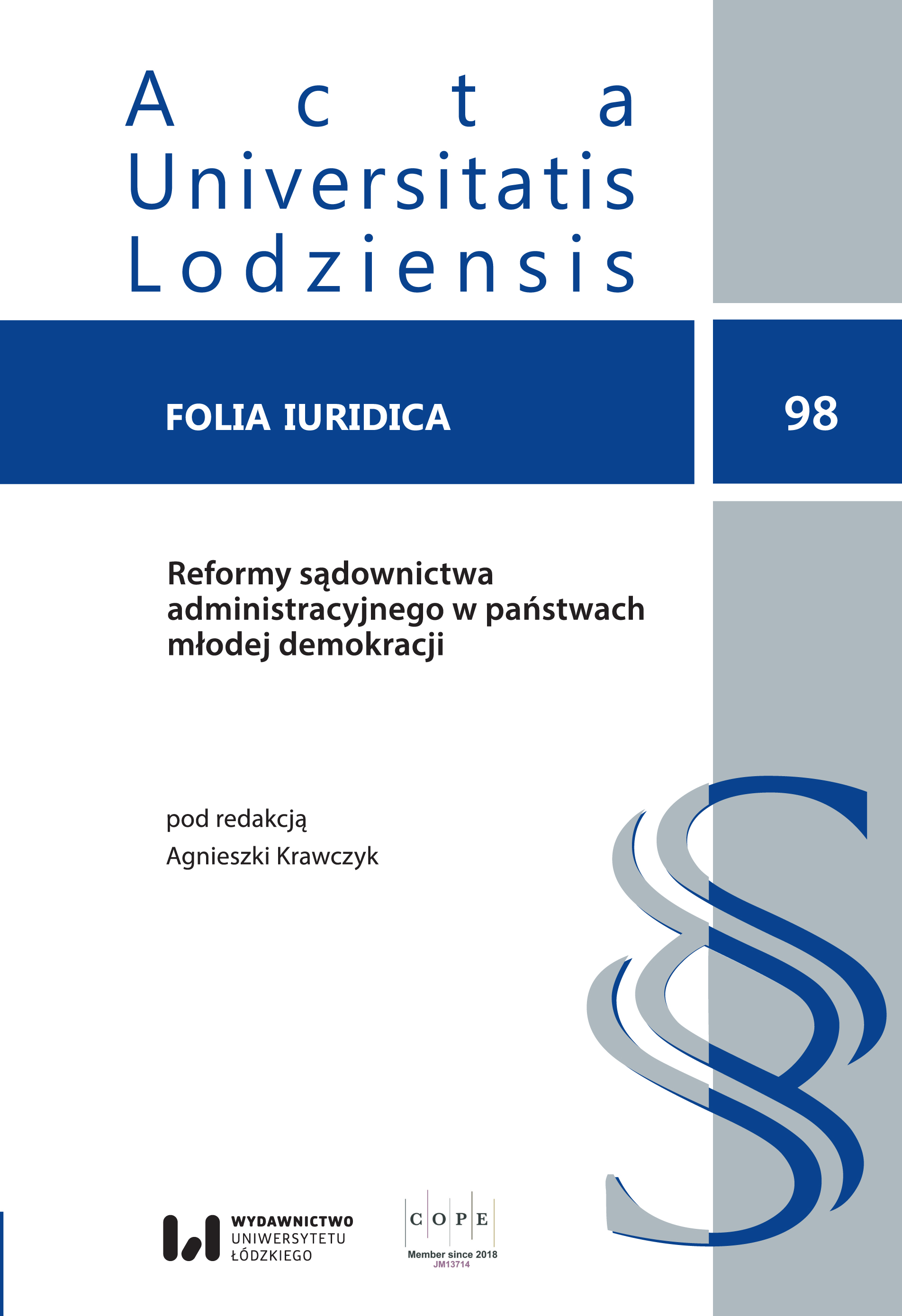The Administrative Judiciary Reforms in Serbia
DOI:
https://doi.org/10.18778/0208-6069.98.07Keywords:
administrative judiciary in Serbia, reform of administrative judiciary, one-tier administrative judiciary, limited and full jurisdiction of administrative courtsAbstract
Judicial control of the administration in Serbia has a long tradition of over 150 years. Initially, this control was exercised by the Council of State, organized according to French models. After World War II, all forms of administrative judiciary were abolished and reinstated as early as 1952, when the competence to resolve administrative disputes was entrusted to common courts, which adjudicated these cases in special chambers. The last phase of the development of administrative judiciary began anew with the creation of specialized judiciary, namely with the establishment of an administrative court in 2010. This court is no longer part of the administration, as it was before World War II, but part of the judicial system. Judicial control of administration is based on the constitutionally guaranteed right to a fair trial. This means that the administrative court decides within a reasonable time on the basis of the law and facts established in the course of a public hearing, and its judgment may be delivered in limited jurisdiction (resulting in a cassation judgment) or full jurisdiction (where the court itself decides the case). This phase of the development of judicial control of the administration is not finished, however, as the administrative judiciary in Serbia has a single-stage structure, and therefore administrative court proceedings are always one-instance. This raises the need for further reforms aimed at introducing two-tier administrative judiciary and increasing its efficiency.
Downloads
References
Ivanović, Jelena. 2019. „Upravni sud Republike Srbije [2010−2019]”. Arhiv za pravne i društvene nauke 3−4: 181−206.
Google Scholar
Krawczyk, Agnieszka. Red. 2022. Reformen der Verwaltungsgerichtsbarkeit in den Ländern der jungen Demokratie. Warszawa: C.H.Beck.
Google Scholar
Lončar, Zoran. 2013. „Primena evropskih standarda u upravnom sporu u Srbiji”. Harmonizacija srpskog i mađarskog prava sa pravom Evropske unije 1: 541−560.
Google Scholar
Milkov, D. 2003. Upravno pravo III: kontrola uprave. Novi Sad: Pravni fakultet, Centar za izdavačku delatnost.
Google Scholar
Ministarstvo pravde Republike Srbije. 2019. Strategija razvoja pravosuđa za period 2019−2024. Radni tekst. Lipiec 2019, https://www.mpravde.gov.rs/tekst/25076/nova-verzija-radnog-teksta-strategije-razvoja-pravosudja-za-period-2019–2024-godine-jul-2019godine.php [dostęp: 22.06.2020].
Google Scholar
Radošević, Ratko. 2013. „Sistemi sudske kontrole uprave”. Zbornik radova Pravnog fakulteta u Novom Sadu 3: 459–473.
Google Scholar
DOI: https://doi.org/10.5937/zrpfns47-4840
Radošević, Ratko. 2014. „Organizacija upravnog sudstva”. Zbornik radova Pravnog fakulteta u Novom Sadu 3: 407−425.
Google Scholar
Radošević, Ratko. 2020. „Reforma upravnog spora: novi pokušaj – stari problemi”. Zbornik radova Pravnog fakulteta u Novom Sadu 3: 1101–1121.
Google Scholar
DOI: https://doi.org/10.5937/zrpfns54-28274
Tomić, Zoran. 2010. Komentar Zakona o upravnim sporovima sa sudskom praksom. Beograd: Pravni fakultet Univerziteta u Beogradu i Sluibeni Pravni fakultet Univerziteta u Beogradu i Službeni glasnik.
Google Scholar
Downloads
Published
How to Cite
Issue
Section
License

This work is licensed under a Creative Commons Attribution-NonCommercial-NoDerivatives 4.0 International License.













